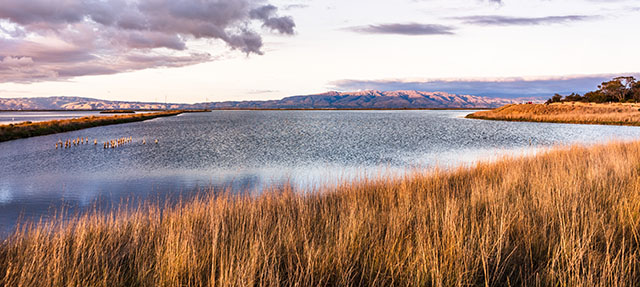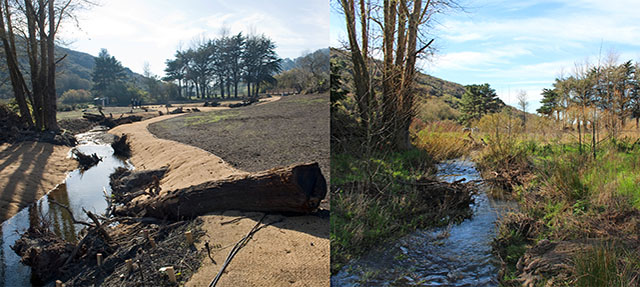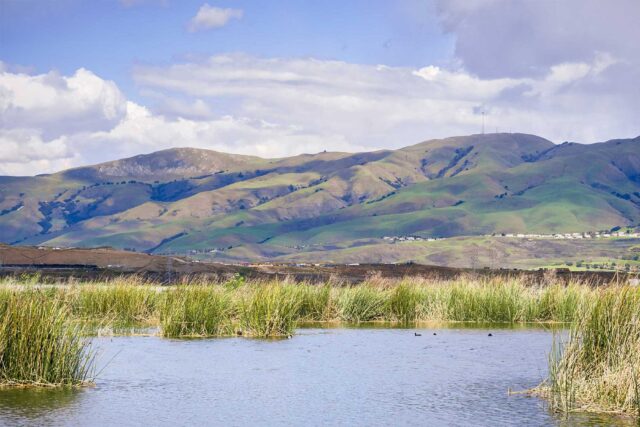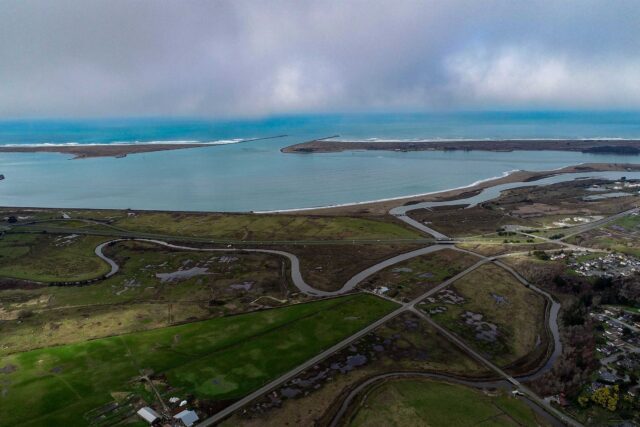This is part of a series on smarter environmental permitting.
Ecosystem restoration projects in California require permits, just as development projects that can harm the environment do. But the cumbersome permitting process slows efforts to restore ecosystems at a time when healthy natural systems are needed more than ever to help fight the effects of climate change. We talked to Letitia Grenier—an adjunct fellow at the PPIC Water Policy Center research network and a senior scientist at the San Francisco Estuary Institute—about how to improve the permitting process. Grenier was recently appointed as the second PPIC CalTrout Ecosystem Fellow.

PPIC: How does California’s permitting process affect environmental projects?
LETITIA GRENIER: The good thing about permitting is it does a really good job at protecting the environment. But an unintended consequence is that we require many different permits for projects, even for ecosystem restoration. These permits come from many different agencies and are derived from a host of laws—sometimes with both state and federal versions. That makes a lot of hoops to jump through—important hoops, but they do make it complex and time consuming.
Too much time and money are spent on permitting, which slows down vital ecosystem work and reduces how much restoration can happen. In part because of the cumbersome permitting process, it can take years or even decades for projects to get built. At the same time, climate change brings real urgency to the need for better-functioning ecosystems to support water supply, flood risk management, water quality enhancement, and wildlife. Many climate change impacts are starting to accelerate, so we need to get these projects going as soon as possible.
In some cases, we’re actually facing a “climate deadline” for restoration projects. We could lose the opportunity to restore ecosystem resiliency if these systems aren’t given enough time to naturally adapt to changing conditions. This is especially key for natural infrastructure solutions like restoring tidal wetlands, which can help protect against rising seas. If we restore these marshes now, they can self-regulate when sea level rise speeds up. If we wait too long, they won’t be able to.
PPIC: The governor has called for making permitting easier under the Cutting the Green Tape initiative. How would you advise him to do this?
LG: The green tape initiative will try to make it easier to get ecosystem restoration projects built. It’s not about streamlining permitting for development projects or reducing environmental protections—it’s about how to make healthier ecosystems by creating a more efficient process for restoration. My project as the PPIC CalTrout fellow will look at what people have already done in this regard, harvest lessons from these projects, and synthesize findings into practical policy recommendations that hopefully build on what the state is already trying to do.
For example, Measure AA from the nine counties of the Bay Area could offer lessons. This property tax measure supports restoration of tidal marshes around San Francisco Bay. But because the scope of the work was going to be a huge burden on the various agencies involved, the funds are also contributing to improved permitting. A team of six staff, one from each regulatory agency, has formed the Bay Restoration Regulatory Integration Team (BRRIT). The team is working on projects that come in to try and figure out what needs to happen to make the permitting go much faster. It’s instructive that, in this case, they got more resources to add staff capacity. That could be a key finding—that it takes more money to allow the agencies to do the work, but also improves the process enough to justify the added expense. If the process gets more efficient, there might be more political will to increase funding.
PPIC: How do you ensure that more efficient environmental permitting doesn’t cause more harm?
LG: That’s exactly what we’re going to look for—successful examples that still have environmental protections in place. Coordination is key. These projects will still be regulated under the same laws; it’s just that it will be more efficient and with more coordination up front. For example, rather than applicants ping-ponging back and forth between regulatory agencies trying to resolve issues that arise as each agency reviews the permit application, BRRIT works collaboratively with the applicants and communicates directly between agencies to help resolve issues before the formal application is submitted. With this approach, common permitting delays are vastly reduced without compromising environmental protection.





